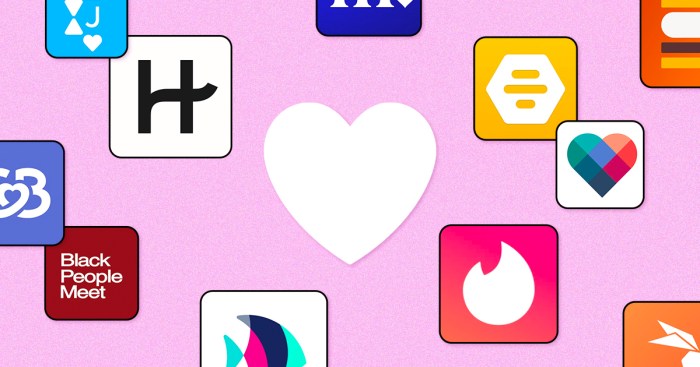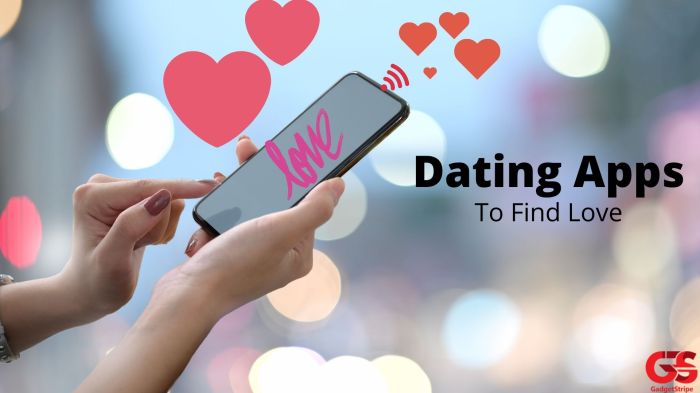Navigating the world of online dating can be a rollercoaster, especially for women. With countless apps vying for attention, finding the right platform that prioritizes safety, genuine connections, and a positive user experience is crucial. This guide delves into the landscape of US dating apps specifically designed with women's needs in mind, comparing popular choices like Bumble, Hinge, and Tinder, analyzing their features, safety measures, and monetization strategies. We'll explore how societal shifts and technological advancements have shaped these apps and discuss the ongoing evolution towards creating safer and more empowering online dating environments for women.
We'll examine the algorithms powering these apps, highlighting potential biases and limitations, and discuss how successful apps have implemented features to combat harassment and promote respectful interactions. From in-app purchase models to user interface design, we'll dissect what makes a women-centric dating app truly effective and appealing. Ultimately, our aim is to equip women with the knowledge needed to confidently choose the platform best suited to their individual needs and goals.
Top US Dating Apps for Women

Source: purewow.net
User Interface Comparison
The user interfaces of Bumble, Hinge, and Tinder differ significantly, impacting the overall user experience for women. Bumble's interface is clean and intuitive, prioritizing user photos and profiles. Hinge boasts a more sophisticated design, encouraging users to create detailed profiles that highlight personality and interests. Tinder, while straightforward, sometimes feels overwhelming due to its volume of profiles. These differences reflect the target demographics and intended user experience of each platform.| App Name | Key Features (Women-Focused) | Pricing Model | User Demographics |
|---|---|---|---|
| Bumble | Women initiate contact; strong safety features; profile verification options; "BFF" and "Bizz" modes | Free; Bumble Boost (paid subscription) | Generally younger demographic; skews slightly towards a more female-leaning user base. |
| Hinge | Prompts encourage detailed profiles; focuses on meaningful connections; less emphasis on superficial swiping | Free; Hinge Preferred (paid subscription) | Slightly older demographic; known for attracting users seeking long-term relationships. |
| Tinder | Large user base; simple swiping interface; Passport feature allows searching outside your location | Free; Tinder Plus, Gold, and Platinum (paid subscriptions) | Wide age range; large and diverse user base, but can be less focused on serious relationships. |
Safety Features
Safety is paramount for women using dating apps. Each app offers a range of safety features, although their effectiveness and user experience vary.- Bumble: Offers photo verification, allows blocking and reporting users, and provides in-app emergency contact options. The women-first messaging system inherently adds a layer of safety by putting women in control of initiating conversations.
- Hinge: Emphasizes profile verification and encourages users to report inappropriate behavior. The focus on detailed profiles and longer-form interactions might deter some less serious or malicious users.
- Tinder: Provides standard blocking and reporting features. However, the sheer volume of users and the quick-swipe nature of the app can make it more challenging to effectively moderate potentially unsafe interactions. While they offer safety tips, the lack of strong verification processes can be a drawback.
Matching Algorithms
The algorithms used by these apps to suggest matches are complex and proprietary, but some general observations can be made. All three apps use factors like location, age, interests, and profile photos to suggest matches. However, the weighting of these factors and the specific algorithms employed are not publicly available, making it difficult to definitively assess potential biases. For example, some users report that apps prioritize showing users who are deemed more "attractive" based on photo quality and the number of likes they receive, potentially leading to disparities in visibility for certain users. The lack of transparency regarding algorithm details limits the ability to identify and address any potential biases.Monetization Strategies and User Experience in Women-Focused Dating Apps

Source: gadgetstripe.com
Many popular dating apps employ a combination of freemium models and in-app purchases to generate revenue. However, the implementation and presentation of these monetization strategies significantly impact user experience. A poorly designed monetization system can lead to user frustration and churn, while a well-executed approach can enhance the overall experience by offering valuable premium features.
Freemium Models and Subscription Options
Freemium models, offering basic features for free and premium features through subscriptions, are common. This allows users to try the app before committing financially. Successful implementations focus on offering genuinely valuable premium features that enhance the dating experience, such as advanced search filters, unlimited swipes, or profile boosts to increase visibilitySuccessful In-App Purchases Catering to Women's Preferences
Popular in-app purchases often center on enhancing profile visibility and improving the matching process. These can include profile boosts that temporarily place a user's profile at the top of search results, highlighting their profile to a wider audience. Another popular option is "super likes" or similar features that signal stronger interest to potential matches. These purchases should be presented as optional enhancements rather than necessities. A successful example would be an app offering a "profile spotlight" package that includes a profile boost, a highlighted profile feature, and a bundle of super likes at a discounted price compared to purchasing each item individually. This caters to women's desire for efficient and effective dating, without feeling pressured to spend.Example of an Ideal In-App Purchase Page
Imagine a clean, visually appealing in-app purchase page with clear descriptions of each item, including the benefits and duration. High-quality images showcasing the features would be included. The page would be organized logically, possibly categorizing purchases by type (e.g., profile boosts, super likes, extended visibility). Pricing would be transparent and clearly displayed, with options for various bundles or subscription tiers. Crucially, the page would emphasize the optional nature of purchases, reassuring users that they can still enjoy the core app functionality without spending money. A section detailing a refund policy and customer support contact information would build trust and transparency.Features to Combat Harassment and Promote Positive Interactions
Apps prioritizing safety and positive interactions often incorporate robust reporting mechanisms for inappropriate behavior. This allows users to easily flag offensive messages or profiles. Many apps also employ AI-powered moderation tools to automatically detect and remove abusive content. Some apps incorporate features that verify user identities or allow users to share their location with trusted contacts for added security. Bumble, for instance, empowers women by giving them control over initiating conversations, thus reducing unsolicited messages. OkCupid’s detailed profile questionnaires and matching algorithms also encourage meaningful connections, filtering out users based on incompatible values or relationship goals, thus minimizing the potential for negative interactions.The Impact of Social and Cultural Trends on US Dating Apps for Women
The design and functionality of US dating apps for women are profoundly shaped by evolving societal expectations and cultural norms. The rise of feminism, increased awareness of online safety concerns, and shifting perspectives on relationships have all significantly influenced the features and marketing strategies employed by these platforms. Understanding these influences is crucial to grasping the current landscape and predicting future developments in the women-focused dating app market.The increasing prevalence of online harassment and safety concerns has led to significant changes in app design. Apps are actively working to mitigate risks and empower women to control their online interactions. Furthermore, the changing cultural landscape, marked by a greater emphasis on body positivity and inclusivity, is reflected in the apps' efforts to promote diverse representation and combat harmful beauty standards.Societal Expectations and App Design
Societal expectations regarding gender roles and relationships significantly influence the features and functionalities of women-focused dating apps. Historically, dating apps often reflected traditional gender dynamics, with men initiating contact more frequently. However, modern apps are increasingly incorporating features that empower women to take control of the interaction, such as allowing women to initiate contact first, or providing tools for blocking and reporting inappropriate behavior. This shift reflects a broader societal move towards greater gender equality and a rejection of outdated dating norms. For example, some apps now feature verification processes to increase user safety and trust, directly addressing societal concerns about online scams and harassment. The inclusion of such features demonstrates a direct response to the demand for safer and more equitable online dating experiences for women.Evolution of Women-Focused Dating Apps (2019-2023)
The past five years have witnessed a rapid evolution in the features and marketing strategies of women-focused dating apps.| Year | Key Feature/Marketing Trend | Example |
|---|---|---|
| 2019 | Emphasis on safety features; beginnings of more proactive moderation | Introduction of in-app safety reporting tools and background checks. |
| 2020 | Rise of virtual dating; focus on connection over superficiality | Increased integration of video chat and virtual date planning features. Marketing campaigns emphasized meaningful connections. |
| 2021 | Increased focus on inclusivity and body positivity; diverse representation in marketing | Apps began featuring diverse models and highlighting body positivity messages in their marketing materials. |
| 2022 | Enhanced privacy controls; greater transparency about data usage | Apps implemented stricter privacy settings and provided clearer information about data collection and usage policies. |
| 2023 | Integration of AI-powered safety tools; personalized matching algorithms based on values and lifestyle | Implementation of AI-driven tools to detect and flag inappropriate behavior. Emphasis on matching based on shared values and life goals, moving beyond superficial criteria. |